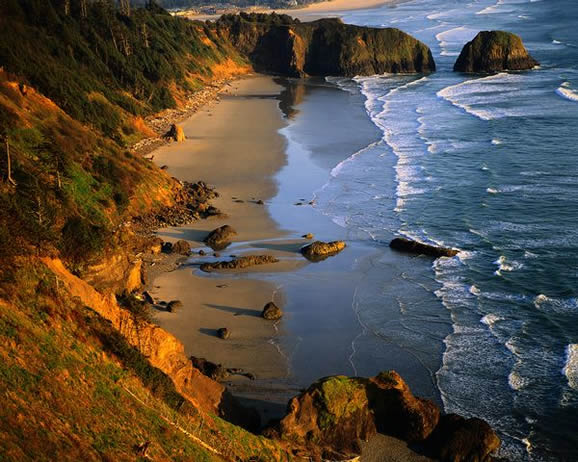Pattern and meaning are related in an organized way.
Any pattern is a recognizable association among elements and features that convey meaning to observers. Some examples of meaningful patterns & associated ideas are:

Recognizing patterns along the seashore, like any place requires some order or organization to examing what you see.
What is important about where we find identifying elements or living features ?
Perceiving is also, often, deceiving!
![]()
Some people see individual items, some see functional relations, others see edges, not all people recognize, however, the meaningful patterns of existence as say Charles Darwin, Rachel Carson, or E. O. Wilson do.
elements |
importance: | operational |
necessary |
sufficient |
definitive |
|---|---|---|---|---|---|
![]() In order to see how biology and landscape exhibit a pattern that reveals important information for protecting human health, the life of shore creatures and even the populations of shellfish, fisheries, whales and other marine mammals far from the shore, organization is necessary.
In order to see how biology and landscape exhibit a pattern that reveals important information for protecting human health, the life of shore creatures and even the populations of shellfish, fisheries, whales and other marine mammals far from the shore, organization is necessary.
Paralax
All are processes that contribute to a deeper view and more informative perception of what exists in the landscape, seascape or cityscape.
 In addition to cosmic as opposed to habitat-related conditions that are found along the shore, the seashore is distinguished from all other shores or edges by the presence of:
In addition to cosmic as opposed to habitat-related conditions that are found along the shore, the seashore is distinguished from all other shores or edges by the presence of:
Contributing factors
Every place is a set of conditions or a situation in which factors --some more and some less important elements-- create a distinct and separate milieu from places with other elements and features. By this we mean there are differences among:
landscape, cityscape, seascape
In nature we say that there are habitats that, because of their inorganic and organic conditions of existence engender different communities of bacteria, fungus, plants and animals. We call these places --once called plant associations and now described as-- primary ecological communities:
Examples of the affects of water on vegetative associations or primary ecological communities:
| land | marine | freshwater | seashore | |
|---|---|---|---|---|
| forests | jungle |
kelp beds |
bogs |
|
| grasslands | prairie |
seagrasses |
||
| deserts | alkali flats |
open water |
thermal pool |
open water |
| tundra | alpine |
ice sheets |
permafrost |
glaciers |
Crucial versus incidental details:
What makes something crucial or necessary for any pattern or functional relationship to produce an outcome?
Remove an item, feature, or element from the pattern or grouping of associated things. If it changes the very character of the whole, then it is crucial.
If, however, when an item is removed and the distinguishing characteristic of the whole remains identifiable, then it is incidental.
Removing water from the landscape changes many things and is thus a crucial element in any association of living things.
Ecological laws contribute to a definitive concept of crucial being defined by the interaction of the water, energy, air & land that comprises any location.
Does the quality, not just the quantity of existing water matter?
Yes!
Salt water is necessary for a marine seashore whereas freshwater characterizes the seashores of the Caspian or Black seas. Sea, normally means a smaller body of ocean water--hence marine; but it is a reltive term for any huge body of water larger than a immense lake.
The puzzling problems involved in patterns of seashore life and conservation:
Science Index | Population Index | Global Warming Index | Nature Index | Brief | Genetics